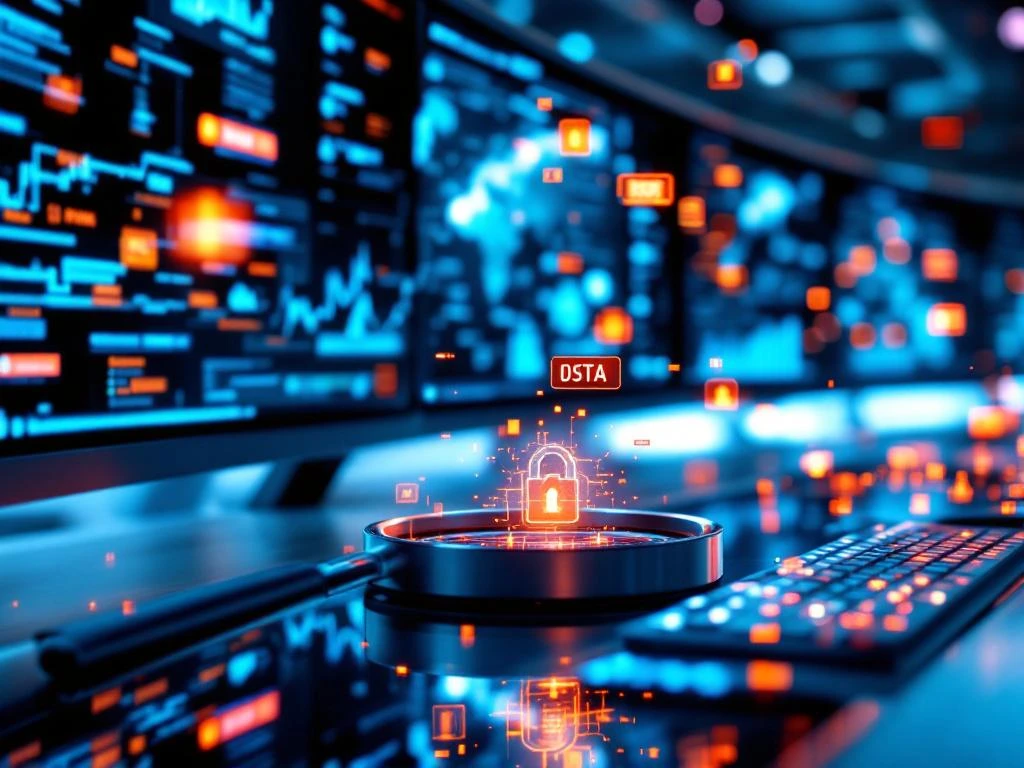

-
UK: +44 203 8876 770
US: 315 508 6500 - cybersecurity@thisisiceberg.com
-
8 Devonshire Square, London, EC2M 4YJ

International tensions, economic sanctions, and diplomatic conflicts create ripple effects that extend far beyond traditional geopolitics. Today’s cyber threat landscape shifts rapidly as nation-states weaponise digital capabilities, turning every connected device and network into potential battlegrounds. This transformation drives unprecedented demand for threat intelligence professionals who can decode these complex patterns and protect organisations from increasingly sophisticated attacks.
The cybersecurity talent market reflects this urgency. Organisations across banking, government, and legal sectors scramble to find professionals who understand both technical threats and geopolitical contexts. These specialists bridge the gap between raw threat data and actionable security strategies, making them some of the most sought-after professionals in cybersecurity today.
This guide examines how geopolitical tensions reshape cyber threats, why traditional defences fall short, and what organisations need to know about building effective threat intelligence teams. You’ll discover the daily realities of threat intelligence work, current market demands, and practical strategies for attracting top talent in this competitive field.
Modern cyber threats mirror the complexities of international relations. When diplomatic relationships deteriorate, cyber activities intensify accordingly. Economic sanctions often trigger retaliatory cyber campaigns, while trade disputes spawn intellectual property theft operations targeting specific industries.
Nation-state actors adapt their tactics based on current political objectives:
These patterns help threat intelligence professionals anticipate and prepare for emerging threats before they materialise.
Supply chain attacks represent another evolution driven by geopolitical factors. Rather than targeting well-defended primary targets directly, threat actors compromise trusted vendors and partners. This approach exploits the interconnected nature of modern business relationships, turning collaborative partnerships into potential attack vectors.
The timing and targeting of cyber operations increasingly align with geopolitical events. Major international summits, treaty negotiations, and diplomatic crises often coincide with spikes in cyber reconnaissance activities. Understanding these correlations allows organisations to adjust their security posture proactively during high-risk periods.
Conventional cybersecurity tools excel at stopping opportunistic attacks and automated threats. However, nation-state actors operate with resources, patience, and sophistication that overwhelm traditional defences. These adversaries conduct extensive reconnaissance, develop custom tools, and maintain persistent access for months or years.
| Traditional Security | Nation-State Attacks |
|---|---|
| Signature-based detection | Custom malware for each operation |
| Automated threat response | Human-driven, adaptive campaigns |
| Technical controls focus | Social engineering and insider recruitment |
| Single-vector attacks | Multi-stage, coordinated operations |
Traditional security approaches also fail to account for the human element in advanced attacks. Nation-state operations often begin with social engineering, insider recruitment, or supply chain infiltration. These attack vectors bypass technical controls entirely, exploiting organisational trust and business relationships.
The scale and coordination of nation-state campaigns exceed what conventional security teams can handle. Multiple attack vectors activate simultaneously, creating complex, multi-stage operations that require dedicated analysis and response capabilities. Without cyber threat analysts who understand these patterns, organisations remain vulnerable to sophisticated campaigns.
Threat intelligence work combines technical analysis with strategic thinking. Professionals spend significant time collecting and analysing threat data from multiple sources, including dark web monitoring, malware analysis, and network traffic examination. This raw data requires careful interpretation to identify meaningful patterns and emerging threats.
Core daily responsibilities include:
The ability to communicate complex technical concepts clearly distinguishes effective intelligence specialist jobs candidates from purely technical roles. These documents help executive teams understand current risks and make informed security investment decisions.
Threat hunting forms another core activity, involving proactive searches for signs of compromise within organisational networks. Unlike automated monitoring systems, threat hunting requires human intuition and creativity to identify subtle indicators that suggest advanced persistent threats or insider activities.
Collaboration occupies substantial portions of threat intelligence professionals’ schedules. They work closely with incident response teams during active threats, brief executive leadership on strategic risks, and coordinate with external partners including law enforcement and industry peers.
Reading about the growing demand for threat intelligence professionals? You're not alone - many hiring managers are discovering just how challenging it is to find qualified candidates in this specialized field.
The demand for qualified threat intelligence professionals significantly outpaces supply across all industry sectors. Organisations struggle to find candidates who combine technical cybersecurity knowledge with analytical thinking and geopolitical awareness. This unique skill combination requires years to develop and cannot be easily automated or outsourced.
Most sought-after technical skills:
Communication skills represent another significant gap area. Many technically proficient candidates struggle to translate complex threat data into executive-level briefings or actionable recommendations for security teams. This communication barrier limits career advancement and reduces the overall effectiveness of threat intelligence programs.
The specialised nature of threat intelligence work compounds recruitment challenges. Unlike general cybersecurity roles, these positions require understanding of specific threat actor groups, attack methodologies, and geopolitical contexts. This knowledge develops through experience rather than formal education, limiting the available candidate pool.
Geographic distribution of talent creates additional complications. Evaluating professionals effectively requires understanding regional threat landscapes and local regulatory requirements, making remote hiring more complex than in other cybersecurity disciplines.
| Career Level | Experience Required | Salary Range (£) | Key Responsibilities |
|---|---|---|---|
| Junior Analyst | 2-3 years | 35,000 – 50,000 | Data collection, basic research, supporting analysis |
| Mid-Level Analyst | 4-6 years | 50,000 – 75,000 | Independent analysis, report writing, stakeholder interaction |
| Senior Analyst | 7+ years | 75,000 – 120,000 | Strategic planning, team leadership, program development |
| Executive Level | 10+ years | 120,000+ | Business leadership, strategic direction, organisational planning |
Mid-level positions involve independent analysis, report writing, and direct client or stakeholder interaction. Professionals at this level often specialise in specific threat actor groups, industry sectors, or geographic regions.
Executive-level positions such as Threat Intelligence Directors or Chief Intelligence Officers represent the pinnacle of career progression. These roles combine deep technical expertise with business leadership skills, commanding the highest compensation levels plus significant bonus potential.
Industry sector significantly influences compensation levels. Financial services and government contractors typically offer the highest salaries, while smaller technology companies may provide equity compensation or accelerated career advancement opportunities.
Effective threat intelligence teams require diverse skill sets and clear role definitions. Start by identifying your organisation’s specific intelligence requirements based on industry sector, geographic presence, and existing threat exposure. This assessment guides hiring priorities and team structure decisions.
Essential team-building strategies:
Consider hybrid team models that combine permanent staff with contract specialists for surge capacity or specialised expertise. This approach provides flexibility during budget constraints while maintaining core capabilities. Many organisations successfully blend internal analysts with external consulting support for complex investigations.
Threat intelligence careers benefit from opportunities to work on diverse projects, attend industry conferences, and pursue advanced training. Professional development investments typically yield strong returns through improved retention and enhanced capabilities.
Focus recruitment efforts on candidates who demonstrate curiosity, analytical thinking, and communication skills alongside technical capabilities. These attributes predict success more reliably than specific tool experience or educational background.
The intersection of geopolitics and cybersecurity creates both challenges and opportunities for organisations worldwide. Geopolitical cyber threats will continue evolving as international tensions shift and technology advances. Building effective threat intelligence capabilities requires understanding these dynamics and investing in the right talent.
Success in this field depends on recognising that threat intelligence represents both an art and a science. Technical skills provide the foundation, but strategic thinking and communication abilities determine ultimate effectiveness. Organisations that prioritise these human elements while maintaining technical excellence will build the most capable threat intelligence teams.
At Iceberg, we understand the unique challenges of finding qualified threat intelligence professionals. Our global network spans 23 countries and includes over 120,000 cybersecurity candidates, giving us unmatched access to the specialised talent your organisation needs. We help connect you with professionals who combine technical expertise with the analytical and communication skills that drive effective threat intelligence programs. If you are interested in learning more, reach out to our team of experts today.













